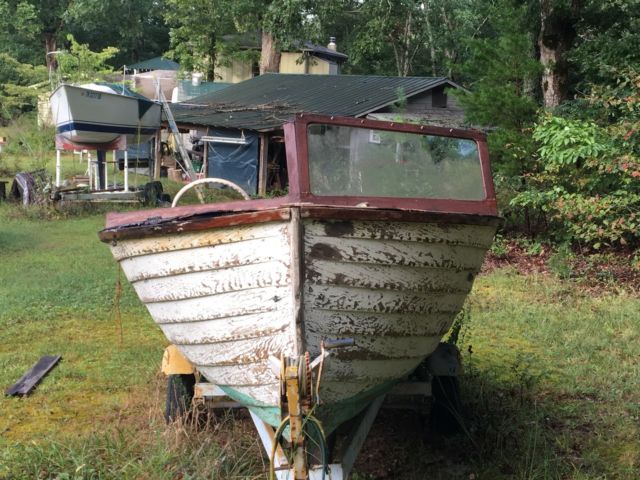

- #TRAILERING A WOOD RUNABOUT LAPSTRAKE PORTABLE#
- #TRAILERING A WOOD RUNABOUT LAPSTRAKE TRIAL#
- #TRAILERING A WOOD RUNABOUT LAPSTRAKE PLUS#
So, for a twenty percent increase in weight you've gained a increase of rigidity of 70 percent.
#TRAILERING A WOOD RUNABOUT LAPSTRAKE PLUS#
The total rigidity is 0.8 plus 0.9 or 1.7. The non overlapped section contributes a rigidity of 0.9 (1.0 times 0.9). So, that overlapped section is 8 times as rigid but only has 10 percent of the surface area, (8 times 0.1) so it contributes a value of 0.8. Lets say 10 percent of the "planks" consist of overlap. So those overlapped parts are going to be 2 cubed or 8 times as rigid as the non overlapped sections. If I recall correctly rigidity is a function of thickness cubed. Those overlaps are going to add significantly to the rigidity of the hull.

There are several designs for the lap clamps. Clean as you go if at all possible using a small squeeze and pull the tape while the epoxy is green. Personally I mark the laps when dry fitting and tape the seam inside to save some additional clean up work down the road of the cured epoxy that is pressed out. ON occasions we use special made lap clamps for the build until the epoxy cures. On small round bilge boats the strakes on the bottom and the turn of the bilge will be some boomerang type shapes.
#TRAILERING A WOOD RUNABOUT LAPSTRAKE PORTABLE#
YOU can add a lot of weight if you also attempt to do so in small portable hulls too. You also will not be doing any fiberglass work at all, as there is no need for it. With all that said, these days lapstrake boats actually need no fasteners along the laps, only using them at the ends and maybe at some frame locations which carried loads such as thwarts. On occasions flat head machine screws with small nuts has also been used. Some of the more thorough builders use a small bead of cotton, which needs some finesse and even can be beaded in larger boats. People use flex polyuerthane caulks these days with rviets or even clench nails the old standard for lapstrakes for the small boats. Iain Oughred uses stuff like 1/4 inch, or 4mm,5mm,&6mm plywood. I went and opened the book to the Rushton Canoe and they used 1/4 inch cedar, but they edge planked it, on other clinkers they have some at 1/4, & 3/8.
#TRAILERING A WOOD RUNABOUT LAPSTRAKE TRIAL#
But have played with in a mockup form and it isn't as hard as it sounds, it just takes some time, trial and a comfortably thinking chair. Then where they converge at the stem you have to rebate the planks, or let it in so the planks start to run together as if flat as they meet the stem on a single plane. They don't dry out.Įach plank has to be spilled (tapered) on both end and have an overlap to creat the lapstrak effect, and this is also where they are glued together. His boats are all plywood lapstrak, fiberglass cloth, and epoxy. But planking in this fasion, the boards will dry out and shrink and split if you don't keep them wet, he explains.Īnother book to get is, 'Clinker Plywood Boatbuildin Manual' by Iain Oughred. They usualy used white cedar for planking, the dust from red cedar is considered toxic I understand. The only problem will be you will want to build everything. John Gardner is considered the upmost authority on this subject. This section ( chapter 6 ) is titled ' Four Canoes '. Chech out th book 'Building Classic Small Craft' by John Gardner, in the back section is included another book ' More Building Classic Small Craft '.


 0 kommentar(er)
0 kommentar(er)
